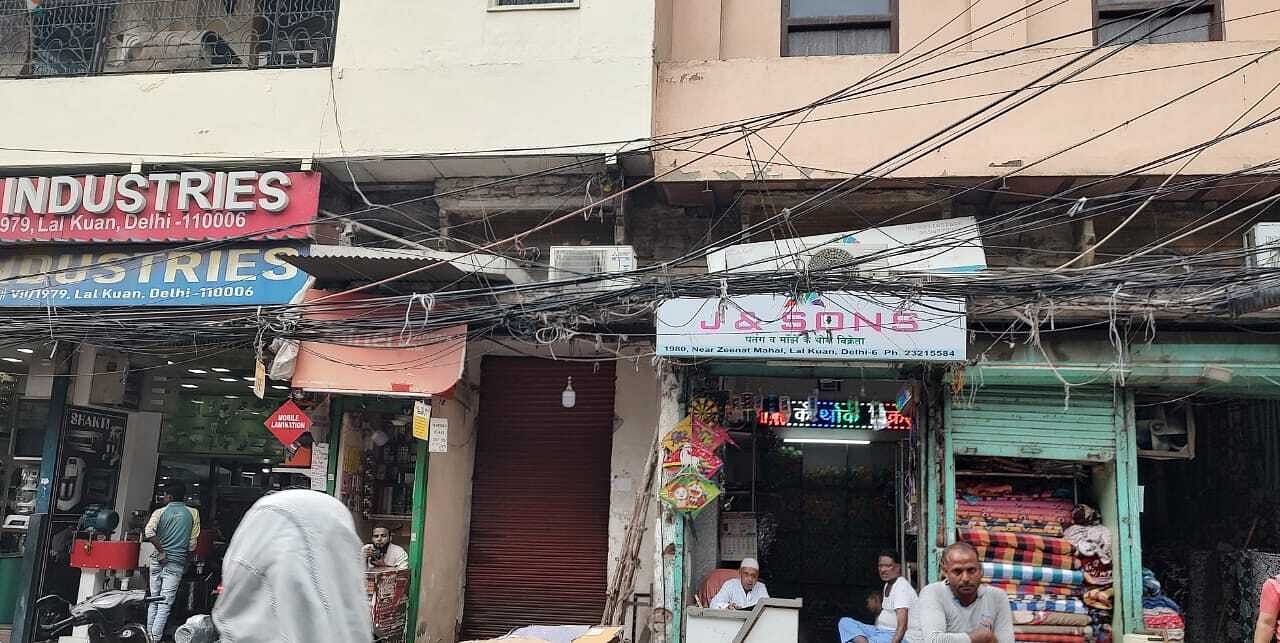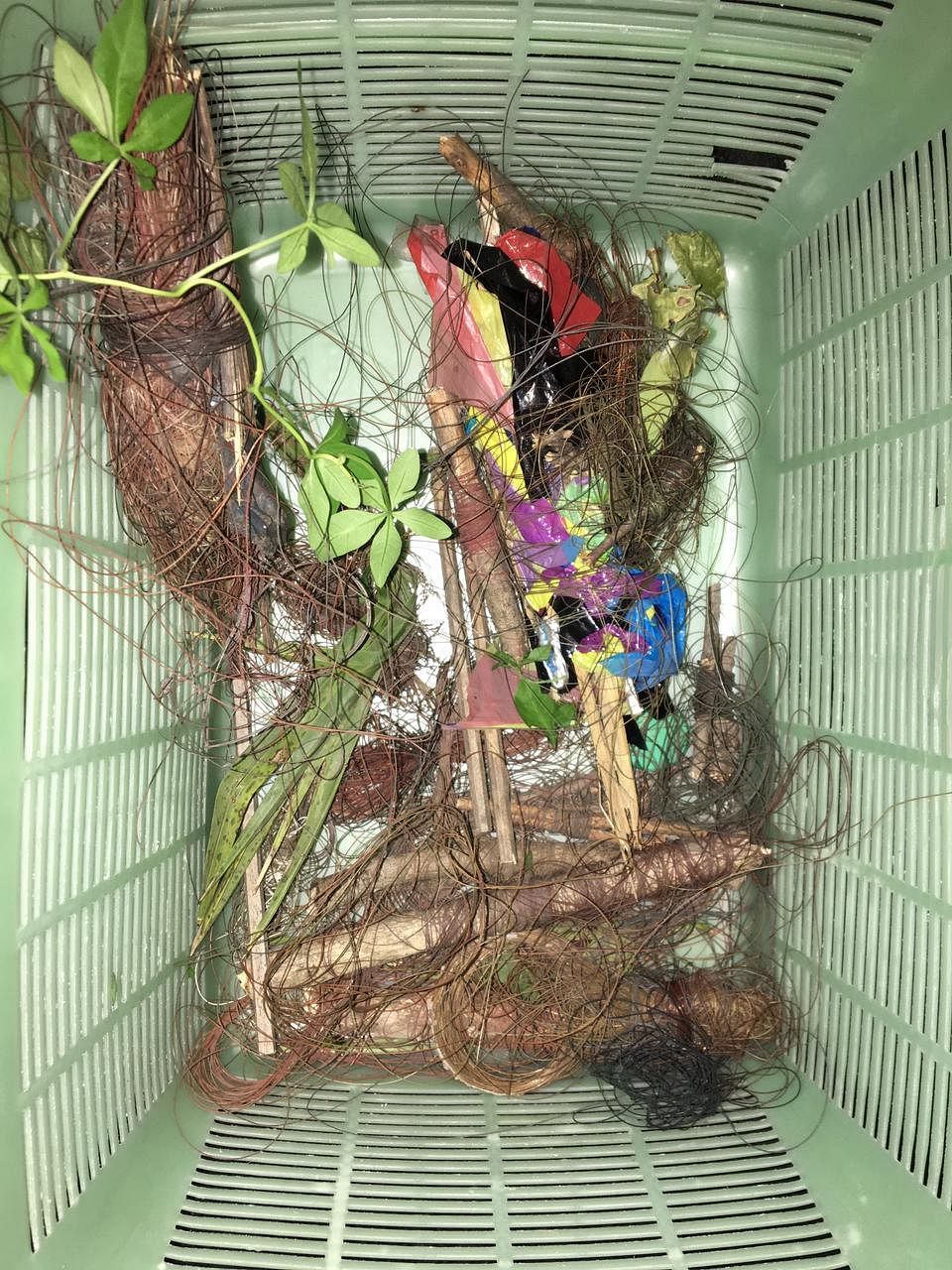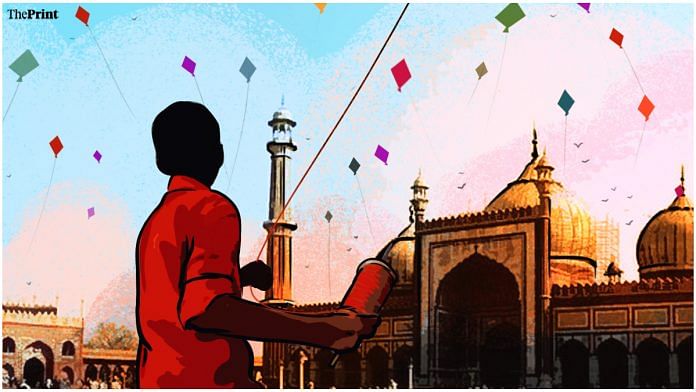New Delhi: One string is meant to protect life, but another is taking lives.
Raksha Bandhan, a day accorded to family ties and protection with a symbolic thread, became a nightmare for one family because of a glass-coated synthetic string, or the Chinese manjha, used to fly kites.
Thirty-five-year-old Vipin Kumar was on his way to celebrate Raksha Bandhan — his wife and daughter were with him on his motorcycle — when a stray manjha fatally slit his throat in Delhi’s Shastri Park on 11 August.
The incident epitomises the darker side of a sport that has traditionally brought joy to generations of families over hundreds of years in India. Empires have risen and toppled, skylines have changed, and cities have emerged, but kites continue to soar in the skies.
For kite-flying enthusiasts, the experience is unparalleled: Colourful kites in varying shapes and sizes dance high in the blue sky, their trajectory wielded expertly by flyers from the ground or the terraces of their homes. The feel of the spool, the tautness in the line, the movement of the kite as it’s buffeted by a whimsical wind, and the tail fluttering behind as it swoops in loops. Kite-flying evokes a sense of freedom and elation that few other sports inspire.
But the emergence of the ‘Chinese’ manjha, which has replaced traditional cotton kite spools, is proving to be a killer – of humans and animals. Five people, including Kumar, have reportedly died due to Chinese manjha in Delhi this year. All of them were riding two-wheelers.
“We are just left with an FIR, what do we do with it? How will anyone determine the killer in this case?” said Kumar’s nephew, Ravi, who was the first to receive the news from his aunt. Kumar’s wife remembered feeling helpless as her husband grappled with the synthetic string that was tangled around his neck.
Also read: Independence Day celebrations: Spirits run high but ‘Chinese manjha’ threat cuts deep
Manjha, the serial killer
There’s nothing ‘Chinese’ about Chinese manjha. “This manjha is produced domestically,” said Sanjay Kumar Sain, DCP, North East Delhi. ‘Chinese’ is merely a misnomer due to its cheaper value.
In 2017, the National Green Tribunal ordered a total ban on manjha made of nylon or any synthetic material. Despite this, August 2022 has proven to be a harsh reminder of personal tragedies for many. According to the Delhi Police, 17,535 rolls of Chinese manjha were seized between August 2021 and Independence Day this year. In the capital alone, 327 cases of illegal manufacturing of manjha were registered, and 326 people were arrested.
“We have also implemented several initiatives to collect the stray kite strings and conducted raids to seize the Chinese manjha,” said Kumar Sain. On Independence Day, wires were tied across poles in some areas of Shastri Park — like a human chain — to collect stray manjha, he added.
Nearly 600 rolls of Chinese manjha from Jafrabad and Bhajanpura and around 150 rolls from the Shastri Park area were seized, according to Sain. Five men were also arrested for possession and selling the glass-coated thread. “Cases under IPC Section 188 (disobedience to order of public servant) and Sections 5 (power to give directions) and 15 (penalty for contravening act) of the Environment Protection Act were filed against the shopkeepers,” added Sain.
As for the origin of Chinese manjha, there is no concrete answer. “Manufacturers are spread across India. Some say it is produced in Haryana and Surat, while others say it is supplied from parts of Madhya Pradesh,” said Tariq Khan, a third-generation kite trader in Jafrabad.
The main reason for its popularity is its cost. “It is a third or half of the cost of the cotton manjha,” said Khan. The receding business has pushed him to switch to a seasonal business — Khan has now adorned his shop with woollen jackets as winter approaches.
Among the oldest kite-traders in Delhi’s Lal Kuan, Chawri Bazaar, and Chand Mohalla in Krishna Nagar, the manjha from Bareilly has always been considered one of the best in India. “A high-quality cotton thread is coated in glue rice flour and a few other materials to give it the sharpness. But it is not strong enough to cause life-threatening injury to humans,” said M.J. Qureshi of J&Sons, a 40-year-old kite shop in Lal Kuan.

Also read: Jahnvi’s emojis, Malaika at gym, Urfi at airport—Paparazzi’s secret handshake with Bollywood
Danger’s the same for animals
The Bareilly manjha may not pose a threat to humans. But for animals, the danger levels remain unchanged — be it cotton or Chinese manjha. Although there is a dip in the number of cases reported for injured birds, the difference is negligible. According to Wildlife Rescue, a Delhi-based bird rescue organisation, 307 cases were reported in 2020, 342 (the maximum) cases were reported in 2021, and 302 cases this year. “Of all the injured birds that have been reported in August, 80 per cent of birds came with entangled Chinese manjha,” said Mohammad Saud, co-founder. Saud and his brother Nadeem Shehzad were also documented for their efforts in Shaunak Sen’s All That Breathes, which won the L’Œil d’or —the Golden Eye — at Cannes this year.
Interestingly, Bengaluru witnessed the maximum manjha-caused injuries in birds during the 2021 lockdown. “As many opted for kite-flying as a pastime during the lockdown, the maximum number of cases were reported from June to August last year. A total of 1,432 cases were reported in 2021 — 447 in June, 543 in July, and 442 in August. In comparison, 2022 has been better with 487 reported cases (in the same duration) up till 22 August,” said Subiksha Venkatesh, rescue manager, Avian and Reptile Rehabilitation Center in Bengaluru.

Allure of kite-flying
Those with a love for kite-flying eschew the dangers of using Chinese manjha.
For Prashant Sharma, a 48-year-old hardware businessman from Chandni Chowk, it was love at first sight when he held the kite as a seven-year-old. “It is a joy to behold when you see the kite levitate into the air as if powered by magic. Once you find the right rhythm, it is no less than dancing. The jugalbandi between me and the kite soaring through the skies was enough to lure me,” he said, as a tinge of nostalgia sparkled in his eyes.
Growing up, his one-stop shop for everything related to kite-flying was Lal Kuan. Walking in the bylanes of Old Delhi can be tricky, considering the number of buyers that throng its small shops at every nook and corner. But it all becomes ‘worth it’ once you have the tether in your hands, and a sense of control and confidence creeps in. “The kite lingers in the sky for a bit until more string is released, and then it puppets left and right, soaring higher and higher, to the tunes of the flyer,” said Sharma.
Years later, he decided to work on his passion and transformed it into a professional commitment. At the age of 17, he and his friends enrolled themselves in a national tournament for kite-flying. “I remember my first ever tournament in an open ground in Wazirabad. There were players from all over the country,” he said, showcasing multiple certificates he had won over the years.
Age is no bar in these competitions, which are conducted annually or biannually. A single team comprises seven to eight players, but only three compete in a one-on-one match. These tournaments are often held on open grounds, away from the bustling city. “The world-renowned Bareilly manjha is used during these competitions, and these venues are away from the traffic or busy highways,” added Sharma.
Even Gen Z isn’t immune to the allure of kite-flying. “It had become an annual ritual as I was growing up,” said Harsh Gupta, 22, a resident of Sadar Bazaar, Delhi.
But something seems to have changed over the years for him. Driving around Roshanara Road and seeing manjha getting entangled around people’s throats has tarnished the joy of flying kites. “I saw a two-wheeler driver struggling with a kite string around his neck that left him severely injured. Luckily, he survived,” says Gupta.
A stack of kites and a manjha roll are lying discarded around in his house. He seems to have moved on.
(Edited by Humra Laeeq)



